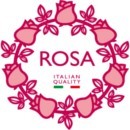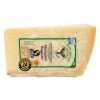History of the production of the king of cheeses
Today I will take you for a walk in time to discover the production processes of Parmigiano Reggiano throughout history, up to the present day.
The production method of Parmigiano Reggiano has changed over the centuries.
Get comfortable because your time travel is about to begin.
THE MONKS
Between 1000 and 1100 the Cistercian and Benedictine monks settled in our territory and began a great work of reclamation of the area between the Via Emilia and the Po river.
At that time this area was mainly marshy and, periodically, it was filled with water due to the floods of the streams.
The vegetation of the place was mostly composed of large oak forests frequented by numerous herds of pigs.
The monks, who had large communities to maintain, began digging channels to drain away the water that covered these lands because they needed to obtain arable land and stable meadows to be used for cattle breeding.
The latter were, particularly, precious because they produced large quantities of milk which were transformed into parmesan cheese as it was the only way that the Benedictine and Cistercian monks had to preserve for a long time the huge amount of raw material they obtained from milking the cows. .
The procedure they followed to obtain forms of cheese that could be preserved for a long time was the following.
The cheesemaker milked the cows in the afternoon, after they had grazed all day, obtaining a fat milk that was left to rest all night in basins.
This procedure meant that the cream, that is the fat part of the milk, emerged naturally as it was lighter than its liquid part.
The following morning the cream surfaced was removed to give life to the skimmed milk. This was in turn mixed with the milk of the cows milked in the morning, which is by its nature lean and in this way the base was obtained to make the cheese which, then, was left to mature until it became Parmigiano Reggiano (Caseus Parmensis , denomination that is used for the first time in an official document in 1254, editor's note).
But what happened to the cream?
It was used to make butter.
HOW THE PARMIGIANO REGGIANO WAS MADE IN THE PAST
To better understand how the monks obtained Parmigiano Reggiano we must follow the milk.
As we saw earlier, in the afternoon, the cows were milked and the milk was brought with a cart to the dairy.
Usually this structure, which was not close to the stables, collected milk from the whole area.
Once it arrived at the dairy, the milk was weighed and recorded in a notebook that reported the name of the farmer who had given it.
This is because 500 liters of milk are needed to make a wheel of parmesan cheese, and at the time no one had a sufficient number of cows to produce such a quantity of milk.
A curiosity: only once they reached the liters needed to produce a wheel of cheese, the farmers who had brought the milk were paid in proportion to the amount brought either with Parmesan cheese or with money.
N. B .: at the time the dairies did not work all year but 120/140 days. In practice, from June (when the cow gives birth to the calf, editor's note) until autumn.
Returning to us, after weighing the milk the cheesemaker put it in flat and low containers where it was left to rest in a cool place all night.
In the morning the whole weighing and recording procedure was repeated for the skim milk that was delivered to the dairy by the farmers.
Once this was done, the cheesemaker poured the latter directly into the boiler and added the skimmed milk, or without cream, from the previous evening.
At this point the fire was lit under the boiler and with a tool called spino the mass that formed when the cheesemaker poured the rennet into the milk (i.e. the enzymes obtained from the stomach of the calves that allow the precipitation of caseins and the rise of the cheese mass, editor's note).
This operation gave rise to a series of grains, the consistency of which was tested by the hands of the dairyman.
These grains falling to the bottom of the boiler allowed to obtain the Parmesan cheese.
Once this cheese mass was recovered with sticks, a linen cloth and a shovel, it was placed inside a circular band of wood, called fascera, which was used to maintain the wheel shape of the Parmigiano Reggiano.
Once drained from the whey, dried and formed into the form of Parmesan cheese, it was massaged regularly every week with dry salt.
This last treatment had the function of removing the water inside and therefore reducing the activity of bacteria.
Once this operation was completed, the parmesan cheese was sent to mature.
Curiosity: initially, and we are talking about the fifteenth century, a wheel of cheese weighed 13 kg because if the aging was compromised, less milk would be wasted.
Over time, the improvement of hygienic conditions and processing methods made it possible to increase the weight of the cheese: 20 kg in the 17th century, 25 kg in the 19th century and 30 kg immediately after the Second World War.
Currently, however, the weight of a whole wheel of Parmigiano Reggiano is expected to be between 33 and 40 kg.
HOW THE PARMIGIANO REGGIANO IS MADE TODAY
In 1954 the Consortium of Parmigiano Reggiano Cheese was born in Reggio-Emilia, which brings together over 320 dairy producers who, in turn, represent the approximately 2600 dairy cattle breeders of the provinces of Parma, Reggio-Emilia, Modena, Mantua to the right of the Po and Bologna to the left of the Reno which constitute the typical production area.
The disciplinary that establishes the production standards of Parmesan cheese, written after World War II, only milk from farms in these areas can be used to produce Parmigiano Reggiano.
But it is not only the origin of the milk that is indicated.
The fodder (fresh or dried grass) that feed the cows must also be local.
This serves to preserve the microbiological footprint of the final product.
And for the same reason, the use of silage corn in their nutrition is absolutely forbidden.
But let's go back to the main topic of this post: the production process.
The consortium in standardizing the Parmigiano Reggiano production process has sanctioned a clean break with the production methods described in the first part of this article.
There are three main differences:
The first is the provision of the use of whey (liquid rich in thermophilic lactic bacteria that is obtained from the processing of the previous day's cheese, editor's note) to facilitate the transformation of milk into cheese.
This serum uses the same principle as the mother yeast and is renewed day by day.
The advantages deriving from its use are:
- the total elimination of lactose which disappears in the first 48 hours of production (which makes Parmigiano Reggiano digestible even for people intolerant to this sugar)
- the superior organoleptic qualities.
- a more consistent and intense taste.
- greater wholesomeness and genuineness of Parmigiano Reggiano.
The second very important novelty is the transition from dry salting to brine immersion salting.
This improves the salt grip by making the shapes from low and wide become narrower and taller.
Furthermore, this innovation meant that the weight of the wheels of Parmesan cheese could increase reaching the current one.
The larger wheels of Parmesan cheese are also of greater value as the percentage of rind is reduced while the percentage of internal pulp increases.
Finally, the third novelty consists in the introduction of steam to heat the milk and, then, the curd present in the boilers.
The introduction of these three very important innovations, then taken from the disciplinary of the Parmigiano Reggiano Cheese Consortium after the Second World War, can be placed between the second half of the nineteenth century and the early twentieth century.
I tell you this to give you an idea of how long the evolutionary process of Parmesan cheese has been which, even today, remains an artisan product that in many of its production steps requires the use of the skilled hands of the cheesemaker.
CONCLUSION
I hope you enjoyed this journey to discover how Parmigiano Reggiano, one of the protagonists of the culinary tradition of Emilia Romagna, which has become an Italian excellence, has been made over time and is currently produced.
Don't miss the next articles subscribe to my Newsletter and keep following the blog!
I look forward to seeing you in the next post
Ciao and bye bye,
Mama Rosa



